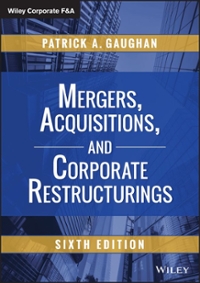Question
Text (include 4 exhibits) + 5 Required questions + Exhibits summary Text: The Case of Nature Candle Limited Bright's investigation showed that with the exception
Text (include 4 exhibits) + 5 Required questions + Exhibits summary
Text:
The Case of Nature Candle Limited
Bright's investigation showed that with the exception of materials cost, all product costing was done on a single, plant-wide, hourly rate. This rate included both direct labour and factory overhead costs. Each batch of products was assigned to labour and overhead cost by having workers charge their time to the job number assigned to each batch, and then multiplying the total hours charged to the job number by the hourly rate.
Exhibit 1 shows how the October hourly rate of $41.95 was calculated.
Exhibit 1: Calculation of Plantwide Labour and Overhead Hourly Rate for October
Labour Dollars Hours
Wick making $40,873 2,527
Wax melting 28,760 2,138
Molding 143,899 7,678
Custom work 61,137 3,712
Packing 218,638 15,357
Total labour 493,307 31,412
Overhead 824,492
Total labour and overhead 1,317,799
Hourly Rate = $1,317,799/31,412 = $41.95 per hour (= $15.70 1abour + $26.25 overhead)
Accordingly, Bright determined a reasonable allocation basis for each of these joint costs (for example, cubic metre of space occupied as the basis of allocating heat costs), and then used these bases to recast October's costs on a departmental basis. Bright then calculated hourly rates for each department (shown in Exhibit 2).
Exhibit 2: Proposed Departmental Labour and Overhead Hourly Rates
Department Labour Rate per Hour Overhead per Hour Total Cost per Hour
Wick making $20.10 $23.53 $43.63
Wax melting 18.50 22.61 41.11
Molding 19.75 46.89 66.64
Custom work 23.10 30.36 53.46
Packing 15.00 15.89 30.89
To obtain some concrete numbers to show the CEO, Bright decided to apply the proposed approach to three MCT activities: 1) the production of BW-18 beeswax candles (MCT's best- selling product); 2) production of spare candles for inventory, and 3) work done by MCT for other Nature Candle divisions. Exhibit 3 summarises the hourly requirements of these activities by department. Bright then costed these three activities using both the October plant-wide rate and the pro forma October departmental rates.
Exhibit 3: Direct Labour Hour Distribution for Three MCT's Activities
Department | BW-18 Beeswax | Spare Candles for | Work for Other
| Candles (per Batch of 100) | Inventory (per Month) | Divisions (per Month)
Wick making 8 hours 122 hours 270 hours
Wax melting 5 hours 108 hours 216 hours
Molding 23 hours 446 hours 863 hours
Custom work - - -
Packing 14hours- -
Total50 hours676 hours 1,349 hours
Faced with all these arguments, Bright decided to do some more calculations before going back to the CEO. First, Bright asked the industrial engineering department to estimate the monthly volume at which each of the five production departments typically operated over the course of a year (normal volume). Then he assembled a new set of overhead cost estimates and recalculated the proposed overhead rates, as shown in Exhibit 4. Finally, Brightrecalculated the labour and overheadcosts ofa 100-unitbatchofBW-18 beeswax candle, a typical month's spare candle production and work for other divisions, based on the "normalised" departmental rates.
Exhibit 4: Departmental Overhead Rates Based on Normal Volume
Department Normal Volume (DLH) Normal Overhead Cost* Overhead (per DLH)
Wick making 2,500 $59,100 $23.64
Wax melting 2,400 51,750 21.56
Molding 8,000 369,000 6.13
Custom work 3,600 110,865 30.80
Packing 17,500 264,338 15.11
Total 34,000 855,053 25.15
* Estimated overhead cost if each department operates at its normal volume.
When Bright circulated these new calculations, the production manager of MCT division was even more perturbed than before:
That's even worse!
Required:
Upon deeper reflection on the above issues both Bright and the CEO decide that external expertise is needed to solve the current impasse in the costing system. They hire you to provide recommendations in the form of a management consulting report. They have requested that the following information be included in the report:
1.Using the data in the exhibits, determine the conversion cost of a 100-unit batch of BW-18 beeswax candle, a month's production of spare candles for inventory, and a month's work done for other divisions under the present model, Bright's first proposal, and his revised proposal.
Step by Step Solution
There are 3 Steps involved in it
Step: 1

Get Instant Access to Expert-Tailored Solutions
See step-by-step solutions with expert insights and AI powered tools for academic success
Step: 2

Step: 3

Ace Your Homework with AI
Get the answers you need in no time with our AI-driven, step-by-step assistance
Get Started


